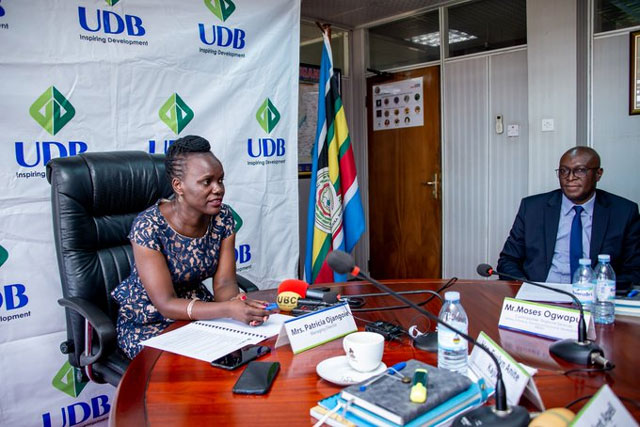
Kampala, Uganda | THE INDEPENDENT | The Uganda Development Bank plans to spend 612 billion Shillings on the promotion of Small and Medium Enterprises in the country, amidst new and evolving challenges facing the economy.
This amount will be more than double the figure spent over the year 2021. The increase in spending, which is supported by the government continued capitalization of the bank, comes as the number of activities grow and more SMEs demand for credit, after the full reopening of the economy.
These funds target enterprises in Primary Agriculture, Manufacturing, Tourism, Agro-processing and Human-Capital Development and Infrastructure including ICT.
The Bank’s Chief Economist Francis Mwesigye says that they are confident they will continue increasing the number of enterprises they support for better economic impact, hoping that the government will continue raising the capitalization funds for the bank.
According to the Development Impact Report 2021, the latest disbursement to the bank was used to support 190 enterprises around the country in the said sectors. This was in addition to the 589 billion Shillings extended by the government as part of the measures to help businesses recover from the effects of the COVID-19 pandemic.
The bank has however faced criticism over the way it handled some funds, especially the 40 billion Shillings meant for the recovery of the tourism sector. Several tour operators’ groups led by the Association of Uganda Tour Operators, accused the bank of discrimination and dealing with only ‘bigger’ players as the rest were under financial challenges that led to some closing businesses.
UDB acknowledges the challenges but blames them on the fact that most of the operators in the industry were informal and could not meet the criteria that were set. In spite of that, the bank claims that its intervention in the tourism and hospitality sector contributed to the growth including the number of rooms for accommodation to 610 in 2021 from 406 the previous year.
Investors in this sector still realized one of the lowest capacities, with the occupancy rate falling from 60 per cent before the pandemic to 25 per cent in 2020, the most difficult year. The rate of room occupancy had grown to 33 per cent by the end of 2021.
On what the real impact has been, UDB says their intervention created at least 41,000 jobs and lifted about 20,000 people out of poverty over the year. This is explained by the growth of the number of people earning at least 210,000 Shillings a month as per the World Bank measure of poverty levels, from 13,261 in 2020 to 32,189 in 2021.
Agro-processing and primary agriculture accounted for 29,000 of the jobs and the two were followed by the manufacturing sector with 7,000 new jobs created, according to the report.
The Private Sector Foundation and the Uganda Bankers Association have both indicated that the production capacity industry is low, with companies operating at less than half the capacity. This is driven by both a reduction in the financial capacity of the companies due to the pandemic as well as low demand for products by the market discouraging higher production.
Mwesigye admits that even their own supported enterprises are still operating below capacity and are yet to return to the pre-pandemic levels of output. He is however hopeful that this will be overcome as the gravity of COVID-19 eases alongside the new geopolitical effects from the Russia-Ukraine conflict.
The bank says that its interventions over the year created a total production value of 2.445 trillion shillings, including 84 billion paid to the government in taxes and 405 billion worth of foreign exchange.
They also refuted accusations that it has neglected smaller businesspeople who need financial help.
Mwesigye says that unfortunately, that is how the bank is structured, adding that it can only lend at least 50 million shillings, which is beyond the capacity of many small and micro-enterprises.
*****
URN
 The Independent Uganda: You get the Truth we Pay the Price
The Independent Uganda: You get the Truth we Pay the Price




Thanks for thinking about us